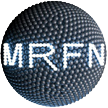The Electron Probe Instrumentation Center (EPIC) EPIC facility offers a wide range of electron microscopy (both transmission and scanning), accessory instrumentation, and expertise to the scientific and engineering community through education, collaboration, and service. The laboratory provides facilities for the preparation and examination of many types of bulk and thin specimens (foils/films), fine particles, and replicas, including biological materials, by transmission and scanning electron microscopy.
Collectively, the Electron Probe Instrumentation Center (EPIC) offers instrumentation, techniques, and expertise for all aspects of microstructure materials. Detailed information about surface morphology, size and shape analysis, local chemistry, crystallography, and texture can be obtained with the scanning electron microscopes (SEM). The SEM facility has four SEMs with digital image acquisition, including three equipped with field emission gun (FEG), and several have EDS systems. The transmission electron microscopes (TEM) allow researchers to probe the crystal structure, defects, local chemistry, electronic structure, and related information at the nanometer or less length scale. The TEM facility currently has three TEMs, one cold field emission gun (cFEG) (HF2000), one Schottky field emission gun (JEM2100F), and one thermal emission gun (H8100). All three microscopes are equipped with Energy Dispersive X-ray Spectroscopy (EDS) system for local chemistry analysis; two are equipped with Gatan Imaging Filter (GIF) for spectral imaging and EELS analysis. Both FEG microscopes are equipped with STEM detectors. The JEOL JEM2100F FEG TEM/STEM has sub 0.2nm probe capability, equipped with high-angle annular dark field (HAADF) detector, which gives atomic resolution of Z-contrast imaging of STEM.
Both SEM and TEM facilities are equipped with specialized specimen stages for dynamic studies involving deformation, fracture, current transport, applied electrical and magnetic fields, and temperature variation from -184 ° C to 1000 ° C. The diversity and quality of SEM and TEM instrumentation, along with the numerous analytical accessories, makes EPIC one of the most advanced laboratories in the country.



